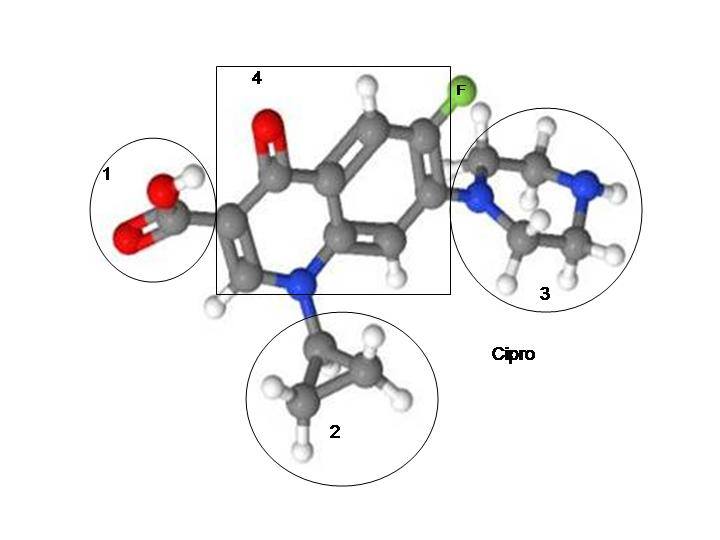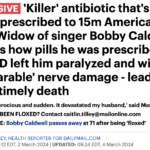A friend* forwarded me a few pharmaceutical industry articles about the November, 2015 FDA hearing regarding fluoroquinolone safety and labeling. The articles are interesting because they show the pharmaceutical industry perspective on the hearing and fluoroquinolones. They are also valuable to us as patient and drug-safety advocates because they are difficult to access—The Pink Sheet articles are typically behind a $1,000+ paywall, and neither The Pink Sheet nor The RPM Report are easily accessible by the public.
The Pink Sheet article was surprisingly balanced and thoughtful, while the RPM Report article was dismissive of patient pain (attributing patient symptoms to social media bandwagoning is a bit…. dickish). However, both articles acknowledge that the patient testimony provided at the November, 2015 FDA meeting was moving, and that people described serious and severe adverse-reactions to fluoroquinolones. It also seems that the pharmaceutical industry is somewhere between resigned-to and supportive-of the updated warning labels on fluoroquinolones. Perhaps I’m reading things into the articles that aren’t entirely there, but they seem to be a bit perplexed as to what to do about Fluoroquinolone Associated Disability–FQAD–which is mentioned by name in both articles, despite it not being an official and recognized label.
Interestingly, the pharma articles bring up a few things that I wholeheartedly support (that they don’t necessarily support, they just mention these things). Before I go into the programs that I support (that are actually brought up in the pharma articles because they aren’t happening, not because they are), I think that we should examine the pharma reaction to the updated warning labels. Why might pharma not continue to fight the updated warning labels?
Perhaps because they know that updated warning labels will not significantly impact fluoroquinolone prescription rates, or their profits.
During the FDA hearing, the pharmaceutical industry fought the updated warning labels on fluoroquinolones, but, as I described in THIS POST, they didn’t fight the updated warning labels because severe/accurate warning labels change prescribing behaviors or cut into their profits, they opposed the warning label updates because warning label updates open the door for patients to sue the pharmaceutical companies for harm caused by their products. Other than that, warning label changes don’t do much at all.
I’m proud of the fluoroquinolone-injured community for all the advocacy and work that went into getting the November, 2015 FDA hearing, and updated warning labels. Those things are accomplishments that should be celebrated. But we should also ask the questions—will those updated warnings actually make a difference? Will doctors stop prescribing Cipro, Levaquin, Avelox, Floxin, and their generic equivalents, for treatment of uncomplicated urinary tract infections (or cystitis), sinusitis, and chronic bronchitis? Will patients and physicians recognize that fluoroquinolones can cause disabling and potentially irreversible serious adverse reactions? The black-box warning notes these things, but will people actually read the updated warning labels and change their actions accordingly?
I hate to say it, but I suspect that the answers to the questions above is no. I think that pharma is resigned to updated warning label as a risk mitigation strategy. They understand that there needed to be a response to the heart-wrenching testimony provided by people whose lives have been devastated by fluoroquinolones, and that the rate of permanent disability resulting from fluoroquinolones reported in the FDA adverse events reporting system (FAERS) is entirely unacceptable, so they went along with a “solution” that they hoped would appease those who have been hurt by fluoroquinolones—an updated warning label.
They know though, that an updated warning label won’t dramatically change how fluoroquinolones are thought of or prescribed. The earlier warning labels were already significant, and though the acknowledgment that comes with seeing, “Fluoroquinolones, including CIPRO®, have been associated with disabling and potentially irreversible serious adverse reactions that have occurred together including: Tendinitis and tendon rupture, Peripheral neuropathy, Central nervous system effects,” is important, what really matters is changing the way that fluoroquinolones are prescribed so that people aren’t unnecessarily hurt by dangerous, disabling pharmaceutical drugs.
The RPM Report notes how the conversation shifted, in the FDA meeting, from concern for those harmed to concern about “communicating risks”:
“DSaRM committee member Tobias Gerhard (Rutgers) said that the evidence from FAERS is not supported yet by epidemiological data but that the distinction of whether it’s a syndrome or not is ‘somewhat secondary’ to communicating risks to separate disabling effects and future work can assess whether there is a syndrome.”
Mr. Gerhard is wrong. The problem isn’t that people aren’t being warned sufficiently, The problem is that PEOPLE ARE BECOMING DISABLED BY FLUOROQUINOLONES AND THAT FLUOROQUINOLONE ADVERSE-REACTIONS MANIFEST AS A SYNDROME. Both the FDA, and the pharmaceutical industry, seem to think that the problem is a lack of awareness, and that updating fluoroquinolone warning labels will solve the problems that FQAD patient advocates are advocating for.
I think it will behove us, as drug-safety advocates, to recognize that this is what they’re doing. They shift the conversation from harm-caused to risks-communicated. They seem to think that it’s okay for an an antibiotic to cause permanent harm and disability as long as people were warned. They can shift the responsibility from the drug-manufacturers, who should be held responsible for the harm their product causes, to the consumer, who they claim “was warned.”
This happens with many dangerous drugs and medical devices, not just fluoroquinolones. The FDA and Bayer responded to patients screaming about how Essure, a permanent contraceptive device, had caused pain and disability to thousands of women, by putting a black box warning on Essure. They didn’t do anything meaningful—like discontinuing Essure because there are safer forms of permanent contraception—they just adjusted the warning label.
Is the FDA so weak that they are incapable of forcing pharmaceutical companies to take responsibility for the dangerous products they create? Apparently. Their inability to take responsibility for the dangerous drugs they peddle means that consumers, you and me, must beware, because we’re taking dangerous drugs at our own risk.
They’ll pretend to actually “do something” by having meetings, hearings, and changing the warning labels. They know that those things won’t actually keep people from getting hurt by dangerous drugs though.
However, the Pink Sheet and The RPM Report articles note that there are a few meaningful things that can be done to change how fluoroquinolones are thought of and prescribed. They mention these things not as suggestions, but rather as a note of things that are not occurring. The Pink Sheet article points out that the FDA failed to call for a Risk Evaluation and Mitigation Strategy (REMS) for fluoroquinolones after the November, 2015 meeting, and the RPM Report points out that no epidemiological studies have been done for fluoroquinolones. Both a REMS and a thorough and well-funded epidemiological study of fluoroquinolones would be real, meaningful steps toward patient safety and quantifying the damage done by fluoroquinolones.
REMS are “required risk management plans that use risk minimization strategies beyond the professional labeling to ensure that the benefits of certain prescription drugs outweigh their risks.” FDA published overviews of REMS can be found HERE.
Per the FDA, “FDA can require a REMS if the agency determines that safety measures are needed beyond the professional labeling to ensure that a drug’s benefits outweigh its risks,” and, “If FDA becomes aware of new safety information* (*New safety information is defined as a serious risk associated with use of the drug which FDA has become aware since the drug was approved, since a REMS was required, or since the last assessment of the REMS) and determines REMS is necessary to ensure that the benefits of the drug outweigh the risks.”
A REMS could, for example, do the following (and more):
- Require a positive and responsive bacterial culture prior to the prescription of any fluoroquinolone.
- Require that other antibiotics be tried, and/or ruled out, before a fluoroquinolone is prescribed.
- Require that medical providers go over the black-box, and other warnings and precautions, with patients prior to prescribing and administering fluoroquinolones. (It would be nice if things like delayed adverse reactions, tolerance thresholds, and the fact that there is no cure for FQAD, were included in the review as well.)
- Require that liver function tests be performed prior to prescribing or administering fluoroquinolones. (We are a ways off from knowing exactly what liver tests may be predictive of adverse reactions to fluoroquinolones.)
- Require genetic tests for MTHFR and other mutations prior to prescribing or administering fluoroquinolones. (We are a ways off from knowing what genes predispose people to adverse reactions to fluoroquinolones.)
- Require that additional warnings and education be provided to patients in high-risk categories such as those with a history of autoimmune disease, neurodegenerative disease, psychiatric illness, athletes, children, etc. (Studies need to be done to determine exactly who is at higher risk of fluoroquinolone adverse reaction.)
- Initiate a campaign of “Dear Healthcare Provider” letters to educate healthcare providers about the risks associated with fluoroquinolones.
- A REMS could also start a database to help track fluoroquinolone recipients, as well as their adverse-reactions.
All of those would be substantial steps toward minimizing inappropriate fluoroquinolone prescriptions, and reducing the number of people suffering from serious adverse-reactions.
However, the FDA decided not to require a REMS. Instead, they adjusted the warning labels.
The Pink Sheet states:
“The decision not to require a REMS to address the risk of disabling side effects with the antimicrobials (fluoroquinolones) could reflect agency wariness about potentially cumbersome risk management programs for the widely prescribed drugs, particularly given its recent experience with REMS for the long-acting/extended-release opioid products.”
The REMS for long-acting/extended-release opioids involved voluntary education for healthcare providers, and “a recent advisory committee review of the REMS showed the number of prescribers completing the training was far below the target goal.”
So, because the REMS for an entirely different class of drugs–long-acting/extended-release opioids–failed, we don’t get a REMS for fluoroquinolones.
A REMS that was similar to the REMS for long-acting/extended-release opioids, that only involved voluntary education for healthcare providers, would be too weak to make much of a difference anyhow, in my opinion. Yes, doctors need to hear about the serious, severe, disabling, and deadly adverse-effects of fluoroquinolones, but without any restrictive prescribing guidelines, that knowledge wouldn’t actually keep many patients from getting hurt by fluoroquinolones.
The Pink Sheet notes:
“Given lingering questions about the effectiveness of the ER/LA opioids REMS – at least in the eyes of the FDA and its external advisors – the agency may be more inclined to try to reduce the risks of fluoroquinolone use through labeling changes rather than imposing another complicated risk management program.”
It sounds to me like the FDA has given up on using REMS as a tool. They’ve given up on a tool that could meaningfully improve patient safety. Now the FDA just changes warning labels and tell patients “you were warned” when they suffer from severe adverse drug reactions. They know that’s not actually doing anything to make patients safer, right? They know that they have tools at their disposal that could make patients safer, right? They’re just choosing not to use those tools. They have given up on meaningful patient safety regulation. It’s sad, really.
Perhaps epidemiological studies are needed in order for the FDA, pharma, and healthcare providers to understand the real and serious effects of fluoroquinolones, and after they get some epidemiological study results they will order a thorough REMS (we can always hope). However, it should be noted that no epidemiological studies have been performed examining fluoroquinolones as they relate to chronic disease or disability.
The RPM Report article states that there have not been epidemiological investigations of fluoroquinolone associated disability – “FDA Division of Epidemiology II Director Judy Staffa said they agency has not found any epidemiological investigations of the syndrome,” and:
“Many FQAD events are not hospitalized and it is not clear what codes may be used; patients also often have symptoms from multiple body systems so may see many different physicians. She (Debra Boxwell of the FDA’s Division of Pharmacovigilance) said there are challenges and expenses with trying to get medical charts for validation, acknowledging that there would ‘certainly be a lot of prescriptions of fluoroquinolones in the system.'”
Yes, there certainly are challenges with performing epidemiological studies of fluoroquinolones and their effects. The delayed adverse reactions, tolerance thresholds, and diffuse and bizarre nature of the adverse-effects make epidemiological studies difficult to perform. But the difficulty in performing adequate and informative epidemiological studies doesn’t mean that they shouldn’t be performed, or that information potentially gleaned from an epidemiological examination of FQAD wouldn’t be something on which policy-changes could be based.
The post, Dear Epidemiologists, Consider Fluoroquinolones, and its introduction on this site, go over some suggestions for epidemiologists who are willing to look into FQAD, and the potential relationship between fluoroquinolones and the various diseases of modernity that fluoroquinolone toxicity symptoms resemble. I hope that the FDA, or some other institution, will perform a well-designed epidemiological study that examines whether or not there are significant links between fluoroquinolones and other disabling syndromes such as autoimmune diseases, “mysterious” diseases like fibromyalgia and ME/CFS, psychiatric illnesses, diabetes, and more.
The only studies that I know of that are examining FQAD are the UCSD Fluoroquinolone Effects Study, and the Lucine Health/Hormones Matter Fluoroquinolone Antibiotic Side Effects Survey, and I do not know if either one is receiving funding from, or corroborating with, the FDA. From what I know about these studies, they will document the severe and disabling effects of fluoroquinolones, but I am not sure whether or not they will examine links between fluoroquinolone use and other disabling, chronic diseases. Epidemiological studies that quantify the extent and severity of fluoroquinolone associated disability still need to be conducted.
Both epidemiological studies, and a REMS, should be performed in order to assess fluoroquinolone safety. According to The RPM Report:
“there are about 32-33 million retail prescriptions annually for quinolones, with about two thirds for ciprofloxacin. Levofloxacin generates about 10 million annually. The other drugs are now very rarely prescribed.”
Yet we have no real notion of how many people are being hurt and disabled by fluoroquinolones because no epidemiological studies have been done. Healthcare providers have no notion of what procedures and precautions take when prescribing fluoroquinolones because there is no REMS to provide guidance. Fluoroquinolones are dangerous, and sometimes disabling, drugs. Yet, rather than doing something meaningful to quantify or mitigate the risk of fluoroquinolone adverse-reactions, the FDA has chosen to simply increase the size and content of the warning labels for Cipro/ciprofloxacin, Levaquin/levofloxacin, Avelox/moxifloxacin, Floxin/ofloxacin, and other fluoroquinolones. The FDA seems to think that risk-communication is the problem, but it’s not—the problem is that fluoroquinolones are dangerous, disabling drugs, and that nothing is being done to quantify or address those risks.
Interestingly, pharma seems to know that the proper thing to do is to quantify the risks posed by fluoroquinolones in epidemiological studies, and to mitigate their risks with a REMS. They wouldn’t have mentioned those approaches in their industry publications if they didn’t think that epidemiological studies and a REMS were appropriate measures for the FDA to take.
The FDA didn’t take the opportunity to order an epidemiological study, or a REMS, at the November, 2015 meeting though. Instead, they changed the fluoroquinolone warning labels. It’s what they do now. They’re publishers, not regulators or patient-protectors.
Even pharma seems surprised at their ineptitude.
* The friend who sent me the Pink Sheet and RPM Report articles is Nick Newell. When I asked him if I should use his name he said, “I think there’s already too much secrecy and anonymity around questions of drug safety – that’s part of the problem. So if you do post it, please feel free to use my name.” Nick lost his brother Oliver to fluoroquinolone toxicity. You can read the Newell family tribute to Oliver and description of fluoroquinolone adverse reactions HERE. Nick and his sister are featured in the news story that can be viewed below, and his testimony at the 11/15 FDA hearing can be read starting on p. 275 of this transcript. He is an advocate and a friend, and he is greatly appreciated.












… [Trackback]
[…] Find More on that Topic: floxiehope.com/fda-gives-up-on-meaningful-patient-safety-measures-instead-changes-warning-labels/ […]
… [Trackback]
[…] There you will find 4865 additional Info to that Topic: floxiehope.com/fda-gives-up-on-meaningful-patient-safety-measures-instead-changes-warning-labels/ […]
… [Trackback]
[…] Here you can find 65794 additional Info to that Topic: floxiehope.com/fda-gives-up-on-meaningful-patient-safety-measures-instead-changes-warning-labels/ […]
… [Trackback]
[…] Read More to that Topic: floxiehope.com/fda-gives-up-on-meaningful-patient-safety-measures-instead-changes-warning-labels/ […]